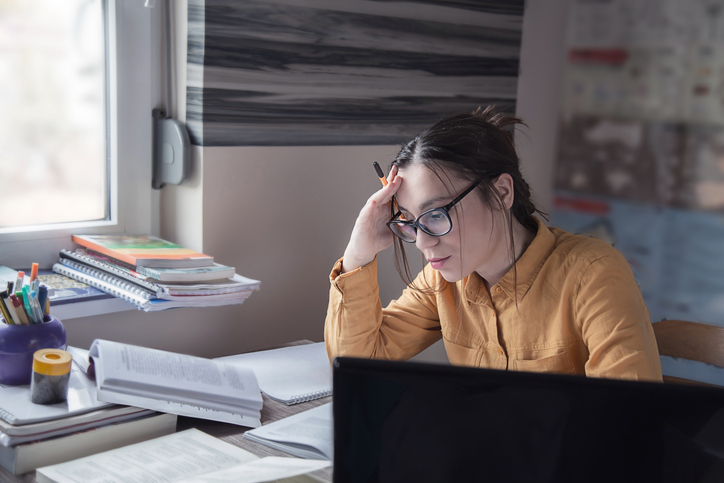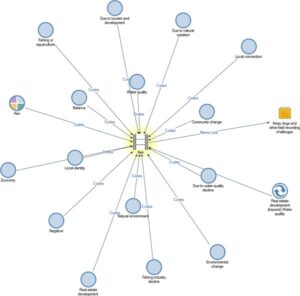
Lyn Lavery is an NVivo Certified Platinum Trainer and, as the director of Academic Consulting, has overseen an extensive range of academic and government-based research projects. In this post, Lyn explains how to use initial qualitative coding as a springboard for deeper data analysis.
I regularly have clients seek assistance once they’ve completed their coding. They’re often buzzing with excitement and say to me, “Right, I’ve done my coding, now what?” as if there’s some magical button I can show them that will produce their write-up. The bad news is that there is no such button—you need to use some good old fashioned brain work at this stage. The good news is that there are a range of strategies you can utilize at this point to help move you forward with your analysis and ultimately, your write-up.
Review your coding
So you think you’ve “finished” your coding, but have you really? It always pays to have a quick review—particularly your node framework and the coding within it. The first thing I usually do is simply read through the content of each node. This is partly to check for accuracy but also in case I need to adjust the level of coding (is there too much or too little material coded for example).

Review your node framework
At this stage I also look at the number of coding references for each node (this can be easily seen in List View). If I have very low numbers of coding references, I consider whether these nodes can be combined to create broader categories. Sometimes the opposite applies and I have very high numbers of coding references, so I might decide to “code on” from the larger node so that I can be more specific. When reviewing nodes I also take a look at any “standalone” nodes I have, and ask myself whether they can be grouped together in a hierarchy.
It’s usually at this stage that I’m really glad I haven’t used highlighter pens for my coding, as all of these changes can be quickly and easily completed within NVivo.
Move beyond description
Depending on how you have developed your coding framework, you might find at this stage that your nodes are quite “low-level” or descriptive. Don’t despair if this is the case—sometimes this type of coding can be a useful springboard for developing more analytic level themes, although this will require some thinking on your part!
A good starting point for this is revisiting your research question(s)—it’s easy to have forgotten these by the time you’ve finished your initial coding. If you need further ideas, we recommend reading Bazeley (2009) and Braun and Clarke (2006)—full references are below.
Query your data and coding
The query tool in NVivo can be particularly useful at this stage of the process to help identify patterns in your data that you may have otherwise missed. Scanning the results of a Word Frequency query, for example, may help identify additional nodes.

A Word Cloud displays the results of a Word Frequency query
You might also like to run text searches for specific concepts that have already been coded—these can be checked against manual coding to ensure that nothing has been left out.
Two of my favorite features of NVivo are Coding and Matrix Coding queries. These allow you to search for patterns across themes, and will also break down nodes according to different demographic or descriptive categories (e.g., what did different age groups say about aspects of the natural environment?). Both techniques may introduce new ideas and relationships that allow you to develop your analysis further or help to structure your write-up.
Paint a picture
The saying that “a picture paints a thousand words” definitely applies to qualitative data! NVivo has a range of visualization tools that can help you think through patterns and relationships.
I particularly like the new Project and Concept Maps, as well as the Explore and Comparison Diagrams. In addition to assisting with your thinking, these visualizations can also be exported and included in your write-up or presentation.

Use an Explore diagram to think through patterns and relationships
Plan for your write-up
While NVivo won’t magically produce your write-up, there are several ways you can use NVivo to assist your writing. I often print or export node content so that I can refer to it as I write. I also like to include verbatim extracts in my writing, so find it useful to copy content from an NVivo node and paste it directly into a document (if you are lucky to have a dual screen set up you can even drag it directly across).
My last piece of advice? Don’t rush the steps above—once you’ve completed your initial coding, it’s easy to rush head first into trying to write-up. Taking the time to review and reflect on your coding is where some real insights occur, and that’s one of the many pleasures of completing a qualitative project!
References
Bazeley, P. (2009). Analysing qualitative data: More than ‘identifying themes’. Malaysian Journal of Qualitative Research, 2(2), 6–22.
Braun, V., & Clarke, V. (2006). Using thematic analysis in psychology. Qualitative Research in Psychology, 3(2), 77–101. https://dx.doi.org/10.1191/1478088706qp063oa
ABOUT THE AUTHOR

Lyn Lavery
Lyn Lavery is the Director of Academic Consulting, a New Zealand based research company that offers NVivo and SPSS training (along with a range of other services). She has a passion for helping fellow researchers and has been teaching research methods and software for over 20 years. Lyn works with a diverse range of clients, including senior academics in leading tertiary institutions, PhD students both within New Zealand and internationally, and research teams within central government. Further details of the services Academic Consulting offers along with a current training schedule can be viewed on their website: academic-consulting.co.nz.

